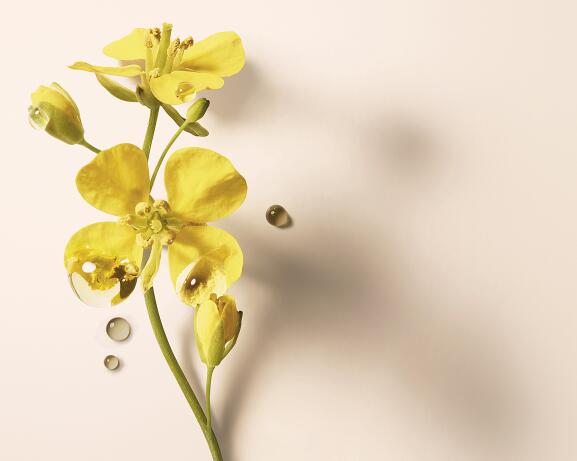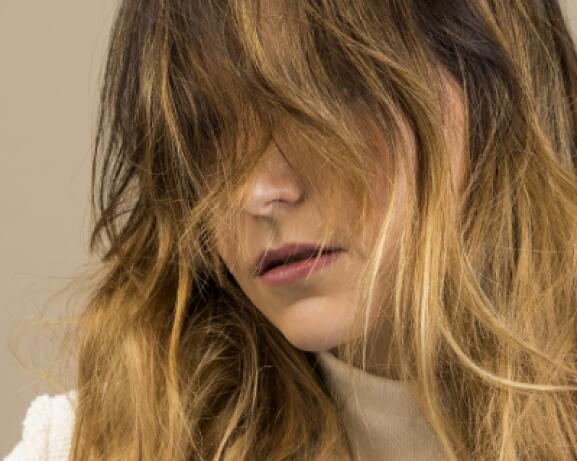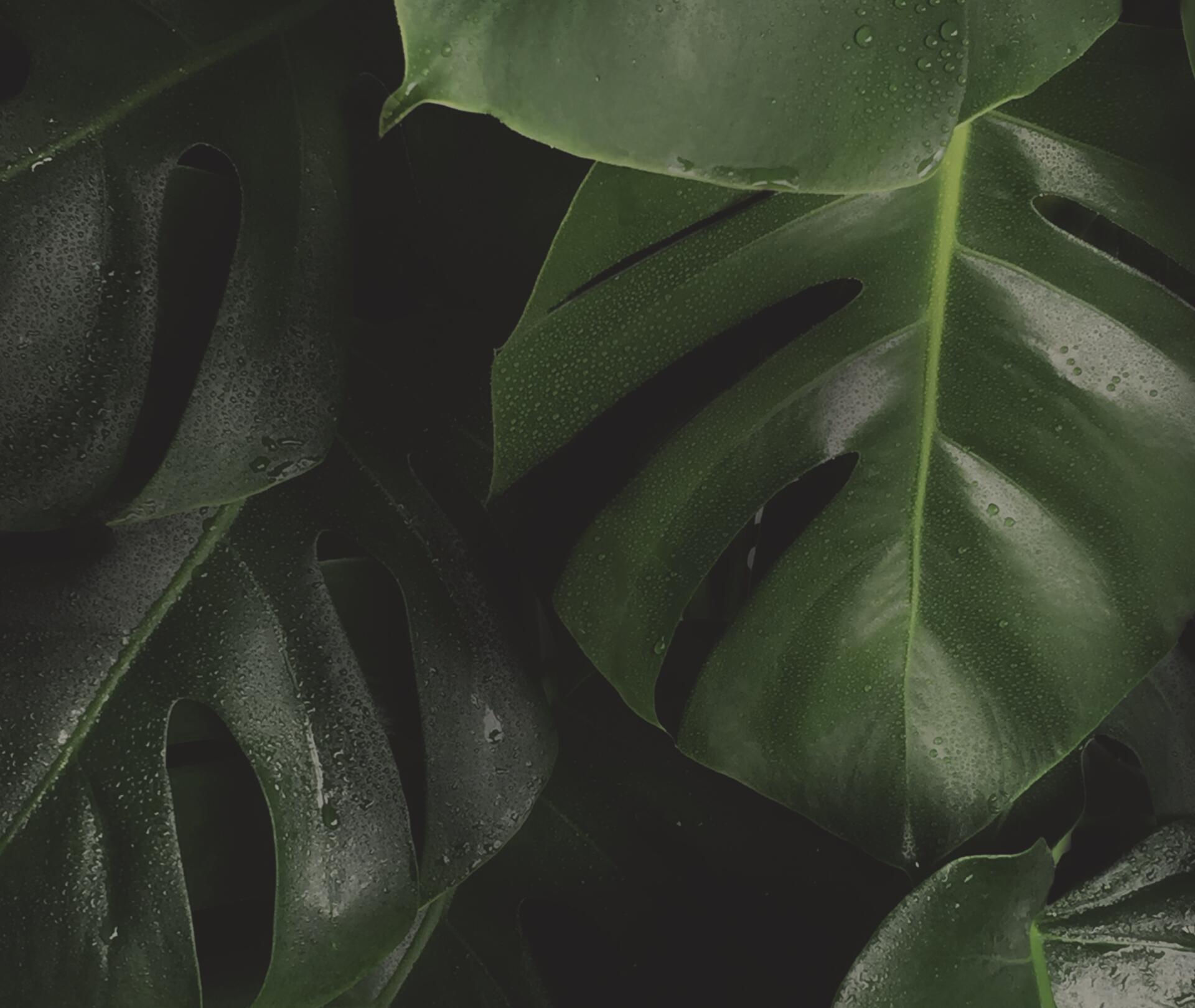?t=crop&x=0.002&y=0.126&width=1.000&height=0.526&outputWidth=1920&outputHeight=560)
?t=crop&x=0.071&y=0.000&width=0.844&height=0.937&outputWidth=577&outputHeight=577)
When hair is dull and looks like straw, is frequently colored or undergoes Brazilian straightening, and is regularly styled with a straightening or curling iron... chances are it is brittle, particularly fragile and damaged.
Clearly, if hair is rough, dull, porous and unmanageable, it’s because it’s exhausted.
The good news? Having brittle and damaged hair is not inevitable. It’s possible to restore vitality, strength and health to hair.
Coloring, bleaching and straightening: I use and abuse it, but today my hair is "on its last legs". It’s damaged and brittle despite all the nourishing care treatments I use.
?t=crop&x=0.004&y=0.016&width=0.813&height=0.974&outputWidth=577&outputHeight=461)
1. Disappearance of the hair's protective barrier (or hydrolipidic film)
Attacked by treatments and other aggressions, this protective surface shield no longer fully plays its role as a barrier. Without its hydrolipidic film, the already weakened hair is even more vulnerable and exposed to external aggressions. This barrier is an important element in the health of the hair and must be restored.
2.The hair’s scales are removed
Like tiles on a roof, the hair’s scales are interlocked. They ensure that the hair is well hydrated and therefore silky for easy styling. When the scales are broken down, they become loose and expose the inside of the hair. This causes the water naturally present in the hair to evaporate excessively and the hair to dry out.
3. Destruction of the keratin in the core of the hair
Heat, colors, a lack of care, etc. Damaged by these traumas, the keratin chains that make up the hair break down. Keratin is a key element of the hair fiber. When it is missing, hair becomes porous, brittle, dry and less beautiful.
Damaged and brittle hair is usually difficult to style and control. It can be prone to frizz if it's curly, split ends, or even a " straw " look in the case of blonde hair.
Having brittle and fragile hair is also a disadvantage for good hair growth. In fact, even if the hair grows at the root, it breaks along the way at the lengths. This gives the unwelcome feeling that the hair grows slowly or not at all.
Damaged and broken hair therefore has different lengths within the hair. This can deteriorate the aesthetic appearance of the cut.
Hair is mainly composed of keratin. This is what ensures its elasticity, strength and shine. When hair is damaged and has a straw-like appearance, it’s important to provide it with care enriched with plant keratin. Rich in amino acids, plant keratin is an active ingredient that penetrates to the core of the hair to fill in gaps and restructure the entire hair fiber.

Originally from the Asian steppes, camelina has been cultivated for its oil in Europe since prehistoric times. Rich in unsaturated fatty acids and omega 3, this highly nourishing oil is known for its protective and softening properties for the hair. It restores its original protection by coating the hair fiber and scales. This makes it the perfect ally for damaged hair in need of repair.
A lipidic extract from soy, biocymentin is an active ingredient that is good for brittle and weakened hair. It acts as a real cement to reinforce the cohesion of the hair cells. It thus limits dehydration and ensures the strength of the hair fiber.
?t=crop&x=0.018&y=0.000&width=0.980&height=0.994&outputWidth=1202&outputHeight=676)
Here is a plan of attack to restore your damaged or brittle hair to its original beauty and strength.

For a healthy start and if the ends are really damaged and split, it can be a good idea to cut the hair. Shortening it by a few centimeters would make it possible to remove the most damaged part, which also sometimes the most difficult to untangle.
Whether you choose to cut it or not, damaged hair is hungry. Hair is hungry for regenerating treatments that work deep down and over the long term to restore its strength and silky appearance.
The use of a mask with nourishing properties, in 3-week or 1-month treatments, will be very beneficial for damaged hair.
After each shampoo, it should be applied strand by strand, on the lengths and ends. The few minutes of rest before rinsing are a real rejuvenation for the hair.
Once the treatment is over, it’s possible to use other treatments adapted to the specific needs of the hair. If it needs more hydration or nutrition, you can opt for a moisturizing or a more nourishing treatment.
Hair that has undergone a lot of aggressive treatments is in a particularly fragile state and needs a break. It’s recommended to reduce the use of aggressive treatments and to postpone, if possible, the next appointment for coloring, straightening, etc. This will allow the hair to take full advantage of the treatments and to absorb them properly. This makes it easier to be sure that the results seen will be related to this care.
When drying, we recommend extreme caution. Hot air is aggressive to the hair, so hair dryers should be used sparingly on a daily basis: this is especially recommended when the hair is already weakened. It’s important to favor cold air drying, or even air drying, and avoid using a straightening or curling iron as much as possible. This will do the hair a world of good. With this newfound freedom, it can express its true nature, whether it’s straight, curly, frizzy or wavy.
If you can't live without hair appliances, you should protect your hair with a heat protection spray. It will limit the harmful effects of the heat and protect the hair fiber from damage. As for styling products, it’s essential to choose one that will be effective and harmless to the hair... It will therefore allow you to style your hair as you wish, without damaging it further.
?t=crop&x=0.000&y=0.056&width=1.000&height=0.887&outputWidth=577&outputHeight=461)
Chemical coloring, straightening or perming are hair treatments that damage the hair. But it’s possible to limit the aggression of these treatments by taking care of the hair beforehand. Preparing the hair with a preventive treatment will allow it to react better to aggressions and maintain its strength and vitality. It’s also advisable to use plant-based dyes that are gentler and kinder to the hair and scalp.
?t=crop&x=0.000&y=0.083&width=0.994&height=0.839&outputWidth=1202&outputHeight=676)
Summer is the perfect time to enjoy the beach, but beware of UV rays, heat, sand, wind, chlorine and salt... All these elements linked to the joys of summer, the beach and vacations are factors that alter the hair shaft and make it permanently fragile!
The hair then becomes porous and begins a vicious cycle. As it gets increasingly dry, it becomes difficult to tame, so we try to style it with different techniques that risk damaging it even more. Hair color can also be damaged by the sun, chlorine, etc. It’s therefore especially important to protect your hair to avoid any unpleasant surprises, such as blond hair that turns green.
Fortunately, there are steps you can take to save your hair from these problems.
In the sun, it’s important to take care of your hair with adapted, waterproof protective care. After exposure, a nutrient-repairing sun mask will do wonders for the most damaged hair.
?t=crop&x=0.114&y=0.031&width=0.809&height=0.969&outputWidth=577&outputHeight=461)
